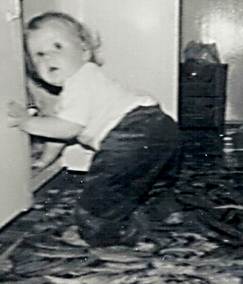 No. It’s not that kind of guilt.
No. It’s not that kind of guilt.
There is one idea that has haunted my thinking in recent months: I could have taught children who now, as adults, are beheading their enemies on behalf of Islamic State.
That hundreds of women and men from the UK have journeyed to Iraq and Syria to fight a brutal war was bad enough. That some of them may have been in my classroom has horrified me. These people have been through our education system. They have walked the corridors of our schools. They have sat in our classrooms. I may have taught them ‘homophones’ or their ‘7 times table’.
Did it matter whether they were taught by evidence-based or evidence-free teachers? Did it matter whether they were labelled as kinaesthetic learners? Did Brain Gym make a difference?
I once wrote that the purpose of education is hope. So where is the hope here? When British people go to join a cause that revels in the genocide of minorities, has our education system failed? Or is this broader than mere education?
I can’t answer these questions on a broad level. And I can’t answer them for any so-called British Jihadis. However I do know something of guilt, firstly that of some colleagues and secondly mine.
Story 1: It was sixteen years ago and I was in my second year of teaching. Returning with 40 children from a visit to a local park, a local youth approached me from behind, hit me hard on the back of my head and knocked me unconscious. There is more of a story than that, I’ll tell it sometime, but for now I’ll focus on the slight sense of guilt I had from my colleagues. It turned out that my attacker had been taught by them. I couldn’t help but sense that they felt they could have done something more when this child had been at primary school. Maybe something that would have stopped the violence.
Story 2: It was earlier this year and I see three young men on my estate who had taught in the same Year 6 class some years before. One of them had been the angry young man of the class – flaring up into uncontrollable anger on a daily basis. I had worked overtime to find ways to include him in my class. It turned out that despite some further flare ups and time in PRUs at secondary, he had settled down, got some GCSEs, joined a local church and community group and looked like become a responsible member of the community. The other two had been underachievers, slightly behind in their reading and maths. I can confirm that I spent less time on them than the first child. Now they both had ASBOs and the first young man warned me to sstay away from them – “they were trouble”.
So there it is. The guilt.
Maybe if I had spent my time better in that Year 6 class I could have helped those children become the kind of students who could have achieved at secondary school. Maybe my input would have made no difference. I know there’s no point living in the hypothetical and I’m certainly not looking for any sympathy.
Last week, at the Google Teacher Academy in London we were ‘Moonshot Thinking’ – thinking of ways that we might make education ten times better than it already is. Is it a moonshot to think we can educate crime and brutality out of society? Or is that beyond moonshot? Was there a point at which a teacher in a school somewhere in England could have said something to the student who later became known as ‘Jihadi John’ that would have stopped him from killing US journalist James Foley?
Is it a moonshot to suggest that all the world’s problems can be solved through education? Or by thinking such aspirational thoughts about education do we inevitably end up finding ways of dealing with guilt brought about by imperfect teachers teaching imperfect students in an imperfect education system?
Image courtesy of http://upload.wikimedia.org/wikipedia/commons/0/07/Caught_red-handed.jpg




.jpg)
